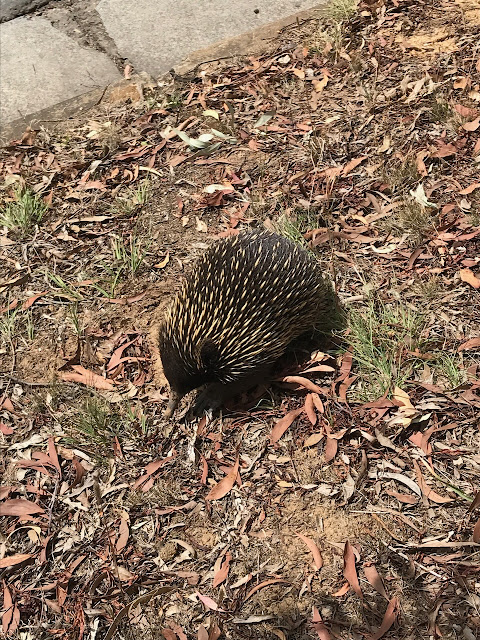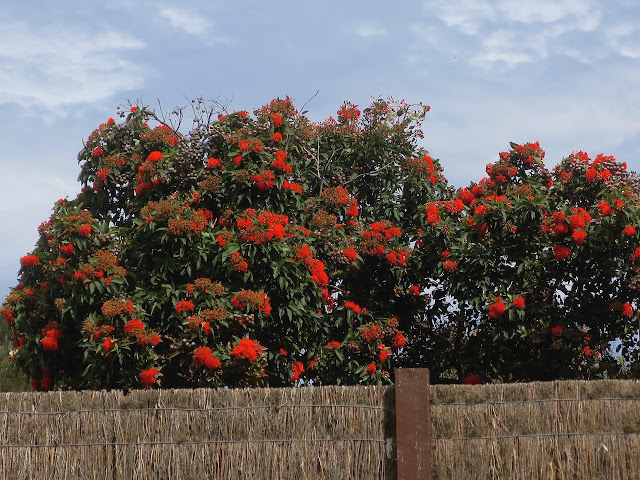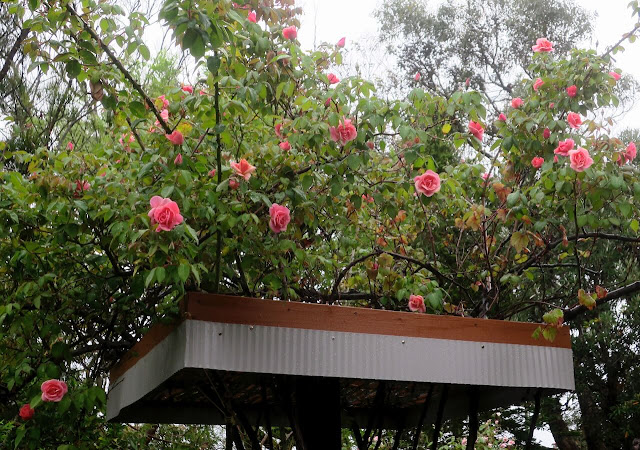Beside a nearby road, for the second time recently we saw a relative of Spike.
The Echidna was feasting on what must have been an extensive ant nest or other ground living insects.
When it got to my shoes and started inspecting my socks for ants I had to suppress my impulse to laugh. The Echidna soon concluded my socks did not harbour ants and continued its foraging.
* * * * *
Meanwhile in the garden...
...the Spanish Broom Spartium junceum, is having a second flowering this season. I assume this is because of the rainy days we had in the last weeks of December.
The Red Valerian (actually pink) Centranthus ruber is flowering in smaller numbers this year, as I pulled out a number of the self-seeded plants.
I used these Summer flowers as the materials for my first ikebana this week.
I arranged three branches of the Broom and added two flower heads of the Valerian in the centre toward the back and partially hidden. This fairly simple ikebana is arranged in a formal-looking style because I have kept all the fine stems in a single line arising from the centre. The vessel is a cup that Laurie bought from the New Zealand ceramicist Elena Renka when we visited in March last year.
Also to my delight the Bromeliad Aechmea gamosepala, has produced three flowers. My internet browsing has taught me that this variety is called "Lucky stripe". This plant was a gift from my sister-in-law Helen, and has only been in our rather dry ground for a couple of years.
Because of the blue tips on the Bromeliad flowers and the fineness of the Scabiosa, I decided to use these three glass bottle-shaped vases. The flowers and vases are placed so that their movement is toward the centre. My first teacher Carlynne would have said the materials are talking to each other. I also added a stem of leaves only, from the Red Valerian in the third vase. My aim was to keep the ikebana feeling light and summery with the water in the glass to be an important element.
Greetings from Christopher
28th January 2023
















.jpeg)
.jpeg)


.jpeg)
.jpeg)
.jpeg)








